|

By Ian Cushway, 15th March 2021
Early TR timeline
Tracing the TR from the sweeping lines of the TR2 to Michelotti's sophisticated TR4.
Having started off in the late 1880s making bicycles, Triumph then started making motorcycles and subsequently a world-beating range of cars, this is truly a marque that has established a prodigious enthusiast base over the years.
Moss have been supplying parts and accessories for the entire TR range from the TR2 to the TR6 and the iconic Spitfire, we can safely say we are one of Triumph’s biggest fans!
So as we proudly announce the launch of our spanking new TR2-TR4A catalogue we thought we'd take the opportunity to glance back at the early TR’s that helped establish Triumph's lasting legacy.
A rocky start
But the TR's road to success wasn't always a smooth one. The precursor to the TR2, the Manx-tail 20TS prototype based on the Standard 8 chassis, which made its debut at the 1952 London Motor Show, got quite a drubbing by BRM development engineer Ken Richardson when he drove it. "Bloody awful, a deathtrap," were his least offensive comments when condemning its handling and rubbish road manners. Far from a promising start for a car that was meant as a rival to the likes of Austin Healey, MG, Sunbeam and even Jaguar! Still, what it did do was give Richardson a say in the development of Triumph's next sports car project to ensure it didn't suffer the same criticism.
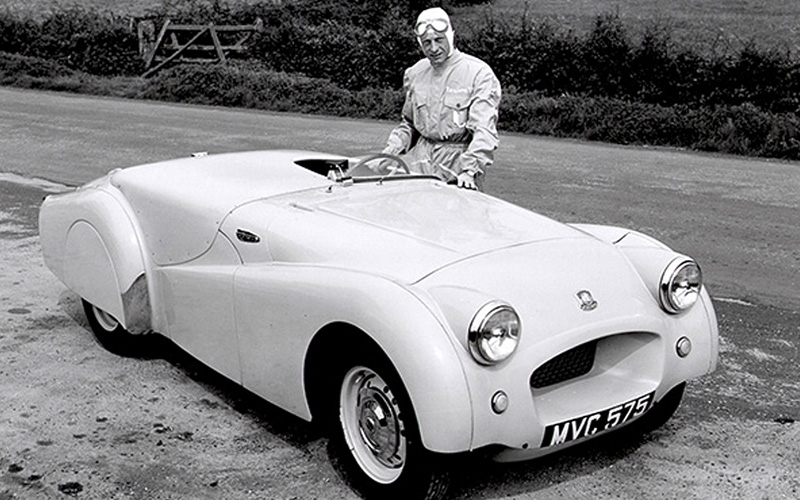
Credit: Photo by viewpointartsmarketing.com
TR2 (1953-’55)
Working with a talented team of skilled engineers, the shortfalls of the 20TS were swiftly overcome to produce the two-seater TR2. Officially, there was no TR1. With its elegant sweeping front wings, steeply dipped doors, recessed grille and the same 90bhp 1991cc overhead valve Standard Vanguard engine under the bonnet, it had all the credentials to be a success.
Making its debut at the 1953 Geneva Motor Show it indeed wowed the crowds and an iconic series of affordable, cheap to run sports cars was born.
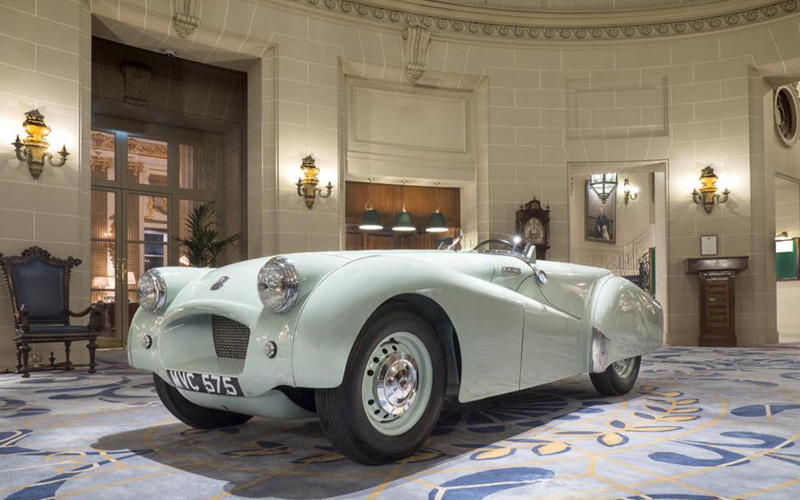
Credit: Photo by barnfinds.com
The fact that Richardson himself set a two-litre class record of 124.899mph at the Jabbeke highway in Belgium that May in a specially prepared TR2 no doubt gave the motoring press plenty of opportunity to extol its virtues. And indeed, that very same record-breaking example still exists today and underwent a comprehensive restoration a few years ago with many of the parts proudly being supplied by Moss.
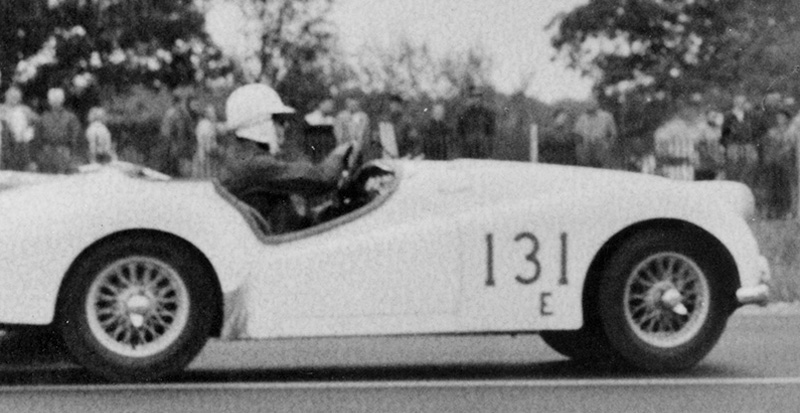
Credit: Photo by Moss Europe Ltd
Costing £555 minus purchase tax, where the TR2 really impressed was however, how it stacked up against its competition. It was both quick (0-60mph in 11.9 seconds which was fast at the time), as well as frugal. A total of 8,636 were built, though a huge chunk (some 5,805) were for the export market – notably the US, which is why so many nice lefthand-drive examples can still be found. Today if you want a TR3, prices start at around £18,000, although cars with a racing history can easily fetch three times as much!
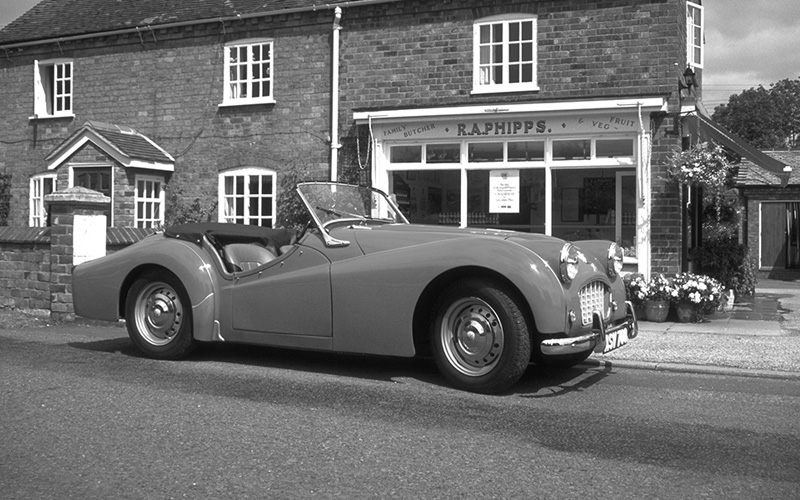
Credit: Photo by Moss Europe Ltd
TR3 (1955-’57)
Distinguishable from its predecessor by its 'egg crate' aluminium grille, the TR3 from 1955 produced a bit more power (95bhp) courtesy of bigger SU carbs, and had Girling disc front brakes as standard from late 1956. Performance equated to 0-60mph in 12.5 seconds, a maximum speed of 102mph and a none-too-shabby 28mpg. Earlier in 1956, a high port cylinder head was introduced which upped power to 100bhp at 5000rpm and gave the '3 a little more oomph where it needed it most.
A total of 13,377 TR3s were made and again the vast majority (12,091) found buyers from across the pond. Around £16,000 is the absolute rock bottom if you want to buy one, as nice examples frequently sell for between £30,000-£40,000. Incidentally, the commission number for LHD cars carried the suffix 'L' and re-imported LHD cars tend to command a lower value than genuine home market examples.
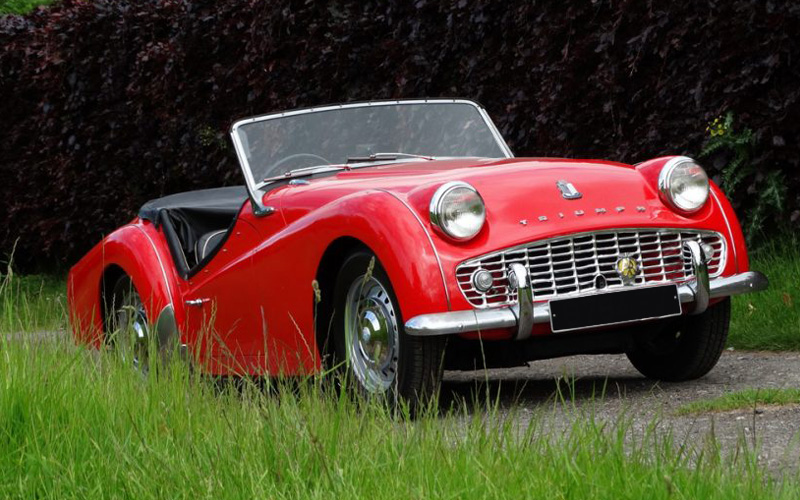
Credit: Photo by classicworld.com
TR3A (1957-’61)
By the time the 'A' arrived in 1957 front discs were standard fitment as was the 100bhp engine. The biggest change, visually, was the 'wide mouth' front grille and external door handles. From 1959, the 2138cc 100bhp wet liner engine was an option and became a popular choice for those wanting a bit more poke, which is why lots of TR3A's were subsequently modified to that capacity too.
A grand total of 58,236 examples left the Canley Works, with just 1896 meant for the home market. Production continued a little longer for the export market, and these models are known as the TR3B. Despite being around in greater numbers, values today are broadly similar to that of the TR3.
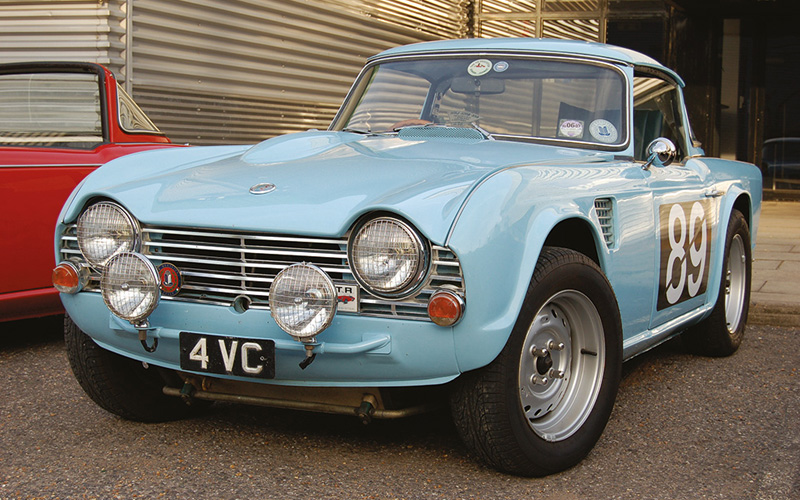
Credit: Photo by Moss Europe Ltd
TR4 (1961-’65)
Marking a distinct departure style wise, the handsome, slab-sided Michelotti designed TR4 appeared soon after Leyland Motors purchased Standard-Triumph in 1961. The bodyshells were built at Speke, Liverpool and there were two models; soft top and hard top with the optional Surrey top canopy and frame which covered the space between the front and rear screens when the hard top centre section was removed. While still on a separate chassis, it was wider and longer the its predecessor. It was also the first TR not to feature the trademark cut-away doors and removable side screens. New too was the lighter and more accurate rack and pinion steering which replaced the old worm and peg setup.
Living up to its sporting image, it could sprint from 0-60mph in 10.9 seconds and reach a top speed of 102mph. That said, while the more modern looks and pokey 105bhp 2138cc four-cylinder engine pleased the pundits, they weren't always as gushing about the new car's rear suspension setup which had been carried over from the TR3. An Autocar report published in the autumn of 1962 exercised extreme diplomacy when it commented, "There may be many who would feel that a 'vintage' suspension of this kind is appropriate to the sporting character of the TR4." An impressive 40,253 TR4s were produced from 1961 to 1965 with 37,661 destined for export. Incidentally, the basic price in 1961 was £750, which was some £87 dearer than the MGA 1600 Mark II at the time and a tad over half the price of a Porsche 356 Super 75.
While a basket case TR4 might have been £3000 a few years back, and a decent one with a few outstanding jobs left to do, £5000-£8000, prices have gone skyward in recent years. Okay, they won't be as much as a more desirable six-cylinder TR5, but today you can expect to pay upwards of £20,000 at the entry end of the market and twice this for a concours example with an interesting past.
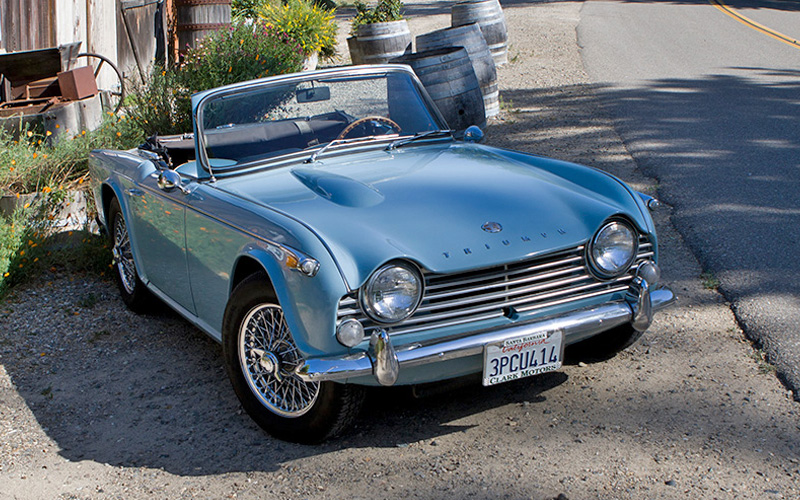
Credit: Photo by Moss Europe Ltd
TR4A (1965-’67)
Grumbles about the live axle setup on the old car led to the swift introduction of the TR4A with its independent rear suspension that incorporated coil springs and semi-trailing arms which made it the most compliant TR to date. However, it turned out to be a too bold a move for North American dealers who wanted a cheaper model and liked the more conventional rear end, hence why they got a supply of cars with the new chassis frame but the old live axle. Some owners still prefer the rigidity of the live axle predecessor – it’s tougher, and generally better equipped to cope with more vigorous rally use. However, it’s obviously harsher than the IRS, and far less flexible.
Incidentally, the TR4A not only had slightly better trim than its predecessor, but also a more ‘organised’ hood whereby the hood is attached to the frame making operation a far more straightforward affair. In total 28,465 TR4As were built from 1965 to 1967, when the model was replaced by the ground breaking TR5 later that year.
But that's a story for another day...
Main image credit: Photo by drive-my.com

Keep up with all the latest from Moss on our social pages
|
|










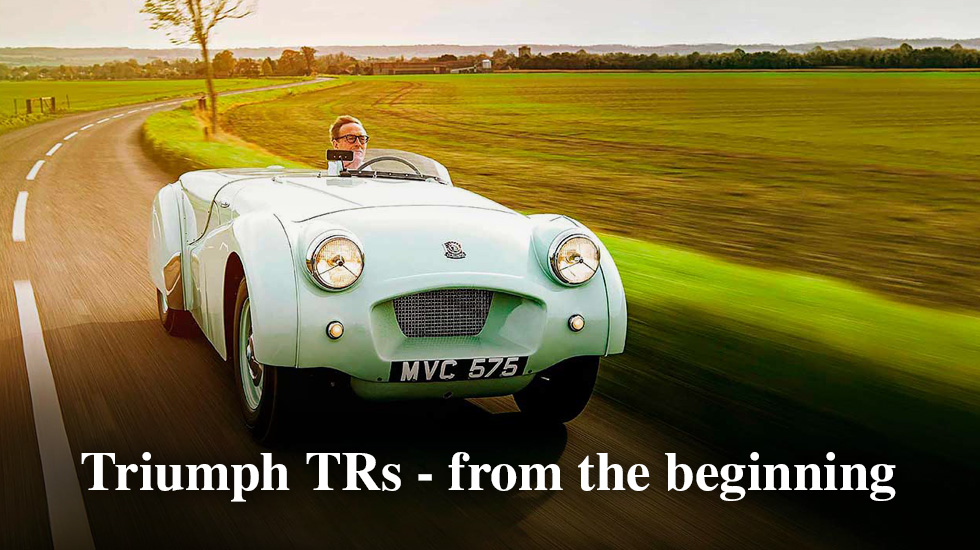




